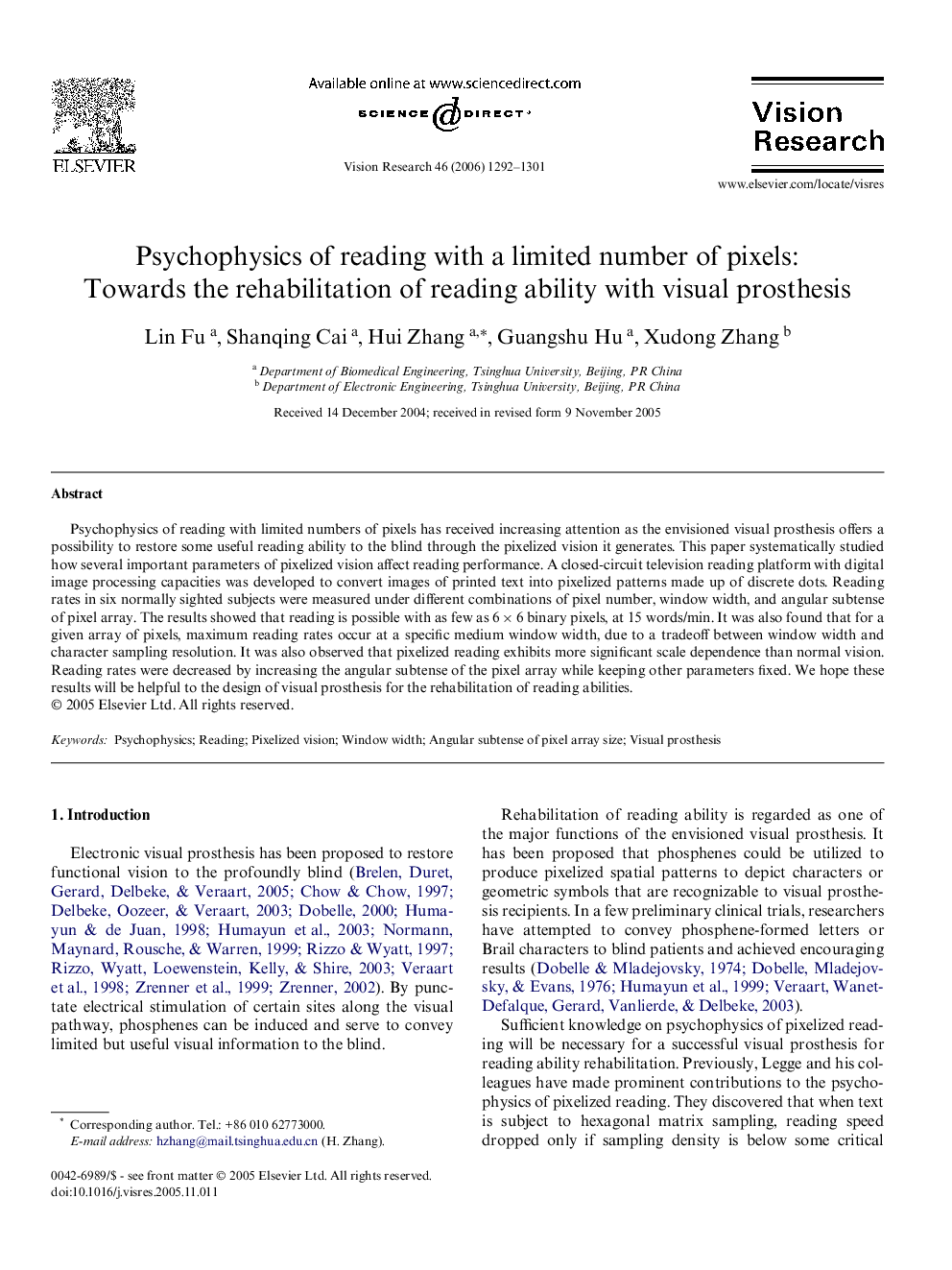| Article ID | Journal | Published Year | Pages | File Type |
|---|---|---|---|---|
| 4035300 | Vision Research | 2006 | 10 Pages |
Psychophysics of reading with limited numbers of pixels has received increasing attention as the envisioned visual prosthesis offers a possibility to restore some useful reading ability to the blind through the pixelized vision it generates. This paper systematically studied how several important parameters of pixelized vision affect reading performance. A closed-circuit television reading platform with digital image processing capacities was developed to convert images of printed text into pixelized patterns made up of discrete dots. Reading rates in six normally sighted subjects were measured under different combinations of pixel number, window width, and angular subtense of pixel array. The results showed that reading is possible with as few as 6 × 6 binary pixels, at 15 words/min. It was also found that for a given array of pixels, maximum reading rates occur at a specific medium window width, due to a tradeoff between window width and character sampling resolution. It was also observed that pixelized reading exhibits more significant scale dependence than normal vision. Reading rates were decreased by increasing the angular subtense of the pixel array while keeping other parameters fixed. We hope these results will be helpful to the design of visual prosthesis for the rehabilitation of reading abilities.
